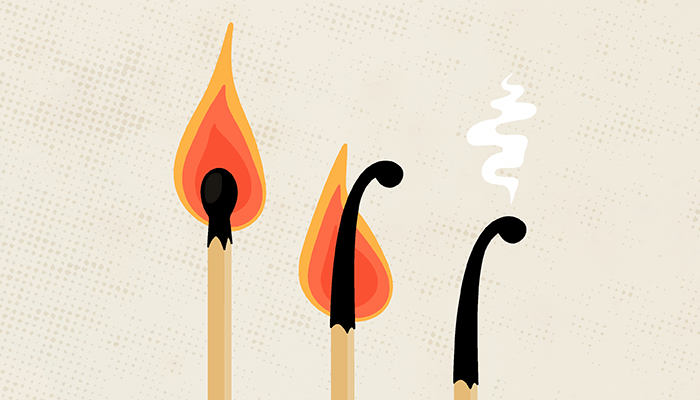
In the wake of the pandemic, many professions have seen a rise in burnout syndrome (BOS) – a condition characterized by depleted energy, decreased productivity, and mental distance from one’s job. Owing to the belief that ophthalmologists have higher physician satisfaction and work in less stressful environments than other medical practitioners, BOS in ophthalmology has been largely understudied – until now. A recent US survey of symptoms has found that ophthalmologists are just as susceptible to BOS as their colleagues in other specialties.
The survey, which was sent out to 592 ophthalmologists in several national ophthalmology societies, found that 37.8 percent of ophthalmologists experienced symptoms of burnout (1). Vitreoretinal specialists were the least impacted at a rate of 30.8 percent; uveitis specialists were most impacted at a rate of 45.4 percent. The data show that physicians employed in academic and hospital facilities report higher rates of burnout than those in private practice. This is particularly alarming when we consider the growing rates of employment in hospital facilities; the number of doctors employed in hospitals rose from 41.8 percent in 2012 to 50.2 percent in 2020 (2).
Particularly interesting was the finding that women are twice as likely to experience BOS as their male counterparts. An earlier study found that the gendered assumption that female practitioners will spend more time counseling patients – requiring more follow up visits and increasing time pressures – is largely to blame for this imbalance (3). Sexual harrasment and discrimination have also been connected to the rise of BOS in female professionals.
Although these findings are US-based, BOS affects medical professionals around the world. By factoring gender, employment autonomy, and place of practice into future studies, researchers can hope to better understand the drivers of burnout and the ways it can be prevented and treated.
References
- JA Sedhome et al., “Physician burnout in ophthalmology: U.S. survey,” J Cataract Refract Surg, 48, 723 (2022). PMID: 34596630.
- CK Kane, “Policy research perspectives: recent changes in physician practice arrangements: private practice dropped to less than 50 percent of physicians in 2020,” AMA (2022). Available at: bit.ly/3DrsgUV.
- M Linzer, E Harwood, “Gendered expectations: Do they contribute to high burnout among female physicians?” J Gen Intern Med, 33, 963 (2018). PMID: 29435727.
